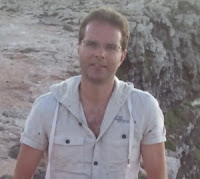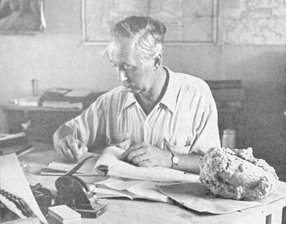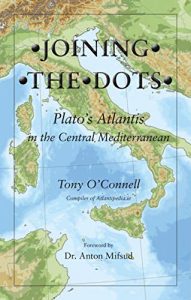Ugarit
Ratti, Diego *
 Diego Ratti is a financial consultant by profession and the author of two related books, Wall Street Watchman [1390] and The Sky Watching Trader [1391]. However, his love of astronomy, archaeology and Lampedusa came together in the development of his website(b). On this small island of Lampedusa in the Strait of Sicily a ‘Stonehenge’ has been identified by Ratti and described in a well-illustrated paper and booklet(c).
Diego Ratti is a financial consultant by profession and the author of two related books, Wall Street Watchman [1390] and The Sky Watching Trader [1391]. However, his love of astronomy, archaeology and Lampedusa came together in the development of his website(b). On this small island of Lampedusa in the Strait of Sicily a ‘Stonehenge’ has been identified by Ratti and described in a well-illustrated paper and booklet(c).
In 2015, he published, in Italian, a book on the prehistory of Lampedusa, La preistoria di Lampedusa [1392].
In a 2016 paper(i) he identified the remains of a prehistoric village on the island as providing “evidence for a late fifth millenium BC colonisation of Lampedusa island by people from Sicily, chronologically around the same time of the Malta early colonisation.” A year later he published another paper(j), La Preistoria di Lampedusa: nuove ipotesi ed interrogativi (The Prehistory of Lampedusa; New Hypotheses and Questions), unfortunately also in Italian only.
Around the same time, Ratti also discovered a “prehistoric underwater place of worship” off the eastern coast of the island(d), and later published a video of the site(e), describing it as a temple similar in layout to some of the Maltese temples.
In March 2021, Ratti published Atletenu [1821], in which he places Atlantis in Egypt, with its capital located at Avaris, better known as the capital of the Hyksos. He identifies Atlas as “Shamshi-Shu I: the Amorite Prince of Ugarit who in 1646 BC led a coalition of Foreign Kings to conquer Egypt starting the XV Dynasty of the ‘Hyksos'”. The book is carefully constructed and well-illustrated, but has no index.
He questions a number of the English translations of the Greek text, offering his own where he deemed it appropriate. One such instance concerns ‘meizon‘, normally translated as ‘greater’ in Tim. 24e & Crit.108e, which Ratti insists should be read as between Libya and Asia, which Avaris clearly is. I pressed Ratti on this interpretation and, after further study, he responded with a more detailed explanation for his conclusion(g). This is best read in conjunction with the book.
However, although he appears to match a number of Plato’s details with the Nile Delta, there was not enough to convince me. Where are the mountains described by Plato with a series of superlatives? Tim 25a-b, describes Atlantean territory as including part of southern Italy, so where is the evidence for the Hyksos occupying any part of Italy? Where is the evidence that Athens fought with the Hyksos?
However, I must acknowledge the extensive amount of research that has gone into this book, which is available as a Kindle or paperback, excerpts from which can be read online(f)(h). It is certainly worth a look.
(b) http://www.megalithic-lampedusa.com/ (link broken)
(c) https://www.scribd.com/doc/64143595/lampedusa-stonehenge
(d) https://www.academia.edu/27713754/Lampedusa_possible_underwater_prehistoric_place_of_worship (link broken)
(e) lampedusa underwater temple – Search (bing.com)
(f) About | Atletenu (archive.org)
(g) More on Atlantis between Asia and Libya (archive.org)
(h) https://www.academia.edu/45672470/Atletenu_Atlantis_Avaris_and_the_Hyksos (link broken)
(i) https://www.academia.edu/27700957/Lampedusa_prehistoric_village_of_Tabaccara_coast?email_work_card=view-paper&li=0 (Link broken) *
(j) https://www.academia.edu/36387354/La_Preistoria_di_Lampedusa_nuove_ipotesi_ed_interrogativi
Late Bronze Age Collapse
Late Bronze Age Collapse of civilisations in the Eastern Mediterranean in the second half of the 2nd millennium BC has been variously attributed to earthquakes, volcanic eruptions and severe climate change. It is extremely unlikely that all these occurred around the same time through coincidence. Unfortunately, it is not clear to what extent these events were interrelated. As I see it, political upheavals do not lead to earthquakes, volcanic eruptions or drought and so can be safely viewed as an effect rather than a cause. Similarly, climate change is just as unlikely to have caused eruptions or seismic activity and so can also be classified as an effect. Consequently, we are left with earthquakes and volcanoes as the prime suspects for the catastrophic turmoil that took place in the Middle East between the 15th and 12th centuries BC. Nevertheless, August 2013 saw further evidence published that also blamed climate change for the demise of Bronze Age civilisations in the region.
In 2022, a fourth possible cause emerged from a genetic research project -disease. The two disease carriers in question were the bacteria Salmonella enterica, which causes typhoid fever, and the infamous Yersinia pestis, the bacteria responsible for the Black Death plague that decimated the population of medieval Europe. These are two of the deadliest microbes human beings have ever encountered, and their presence could have easily triggered significant heavy population loss and rampant social upheaval in ancient societies(d).
Robert Drews[865] dismisses any suggestion that Greece suffered a critical drought around 1200 BC, citing the absence of any supporting reference by Homer or Hesiod as evidence. He proposes that “the transition from chariot to infantry warfare as the primary cause of the Great Kingdoms’ downfall.”
Diodorus Siculus describes a great seismic upheaval in 1250 BC which caused radical topographical changes from the Gulf of Gabes to the Atlantic. (181.16)
This extended period of chaos began around 1450 BC when the eruptions on Thera took place. These caused the well-documented devastation in the region including the ending of the Minoan civilisation and probably the Exodus of the Bible and the Plagues of Egypt as well. According to the Parian Marble, the Flood of Deucalion probably took place around the same time.
Professor Stavros Papamarinopoulos has written of the ‘seismic storm’ that beset the Eastern Mediterranean between 1225 and 1175 BC(a). Similar ideas have been expressed by Amos Nur & Eric H.Cline(b)(c). The invasion of the Sea Peoples recorded by the Egyptians, and parts of Plato’s Atlantis story all appear to have taken place around this same period. Plato refers to a spring on the Athenian acropolis (Crit.112d) that was destroyed during an earthquake. Rainer Kühne notes that this spring only existed for about 25 years but was rediscovered by the Swedish archaeologist, Oscar Broneer, who excavated there from 1959 to 1967. The destruction of the spring and barracks, by an earthquake, was confirmed as having occurring at the end of the 12th century BC. Tony Petrangelo published two interesting, if overlapping, articles in 2020 in which he discussed Broneer’s work on the Acropolis(e)(f).
>A recent review of two books on subject in the journal Antiquity begins with the following preamble;
“The collapse c.1200 BC’ in the Aegean and eastern Mediterranean—which saw the end of the Mycenaean kingdoms, the Hittite state and its empire and the kingdom of Ugarit—has intrigued archaeologists for decades. As Jesse Millek points out in (his book) Destruction and its impact, the idea of a swathe of near-synchronous destructions across the eastern Mediterranean is central to the narrative of the Late Bronze Age collapse: “destruction stands as the physical manifestation of the end of the Bronze Age” (p.6). Yet whether there was a single collapse marked by a widespread destruction horizon is up for debate.” (g)<
(b) https://academia.edu/355163/2001_Nur_and_Cline_Archaeology_Odyssey_Earthquake_Storms_article (this is a shorter version of (c) below)
(e) https://atlantis.fyi/blog/platos-fountain-on-the-athens-acropolis
(f) A General Program of Defense | Atlantis FYI
(g) Getting closer to the Late Bronze Age collapse in the Aegean and eastern Mediterranean, c. 1200 BC | Antiquity | Cambridge Core*
Schaeffer, Claude Frédérick-Armand
Claude Frédérick-Armand Schaeffer (1898-1982) was a French archaeologist who is probably best known for his work at the Ras Shamra site in  Syria which he identified as the ancient port city of Ugarit. He worked on and wrote about the site from 1929 until his death.
Syria which he identified as the ancient port city of Ugarit. He worked on and wrote about the site from 1929 until his death.
Schaeffer enter the arena of catastrophism in 1948 when he declared[806] that during the Bronze Age on at least five occasions, widespread catastrophic destructions has taken place throughout the Middle East.
Some chapters from his book, Stratigraphie Comparée et Chronologie de l’Asie Occidentale (III et II. Millénaires), have now been translated and available online(c).
He attributed these events to seismic activity, which was perhaps related to the ‘seismic storm’ referred to by Stavros Papamarinopoulos in his paper, Plato and the seismic catastrophe in the 12th century BC Athens(b).
It was left to others such as Velikovsky and René Gallant[0748] to add the possibility of extraterrestrial bombardments.
Plato recorded how the priests of Sais told Solon of a succession of catastrophes that befell the region, including earthquakes, inundations such as the Flood of Deucalion and the fall of Phaeton adding historical support for the theories of Schaeffer, Velikovsky and Gallant inter alia.
Schaeffer and Velikovsky exchanged correspondence(a).
(a) Claude Schaeffer – Professor Claude F.A. Schaeffer of the College de France (archive.org) *
(c) https://www.q-mag.org/reading-from-claude-schaeffers-stratigraphie-comparee.html
